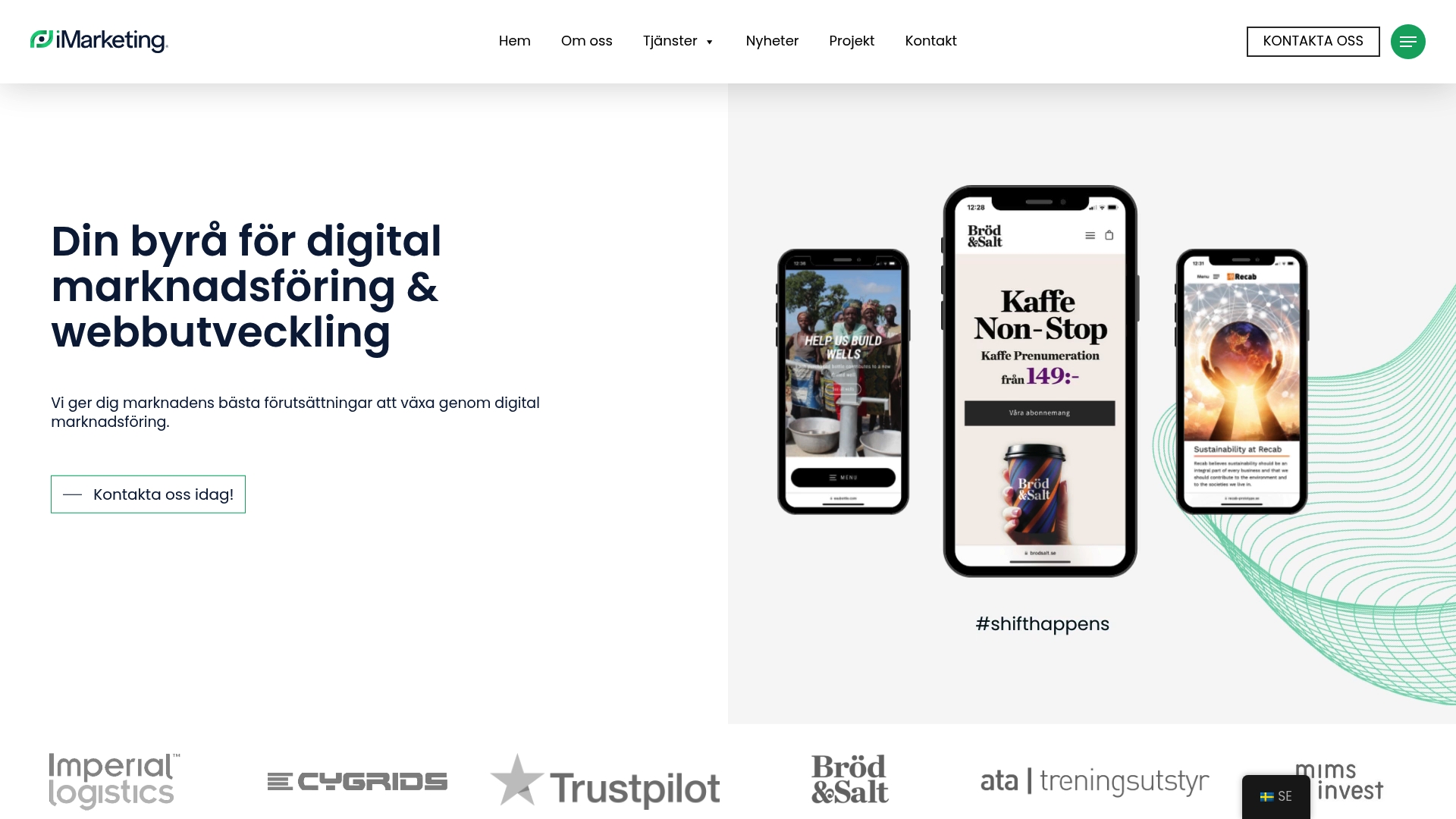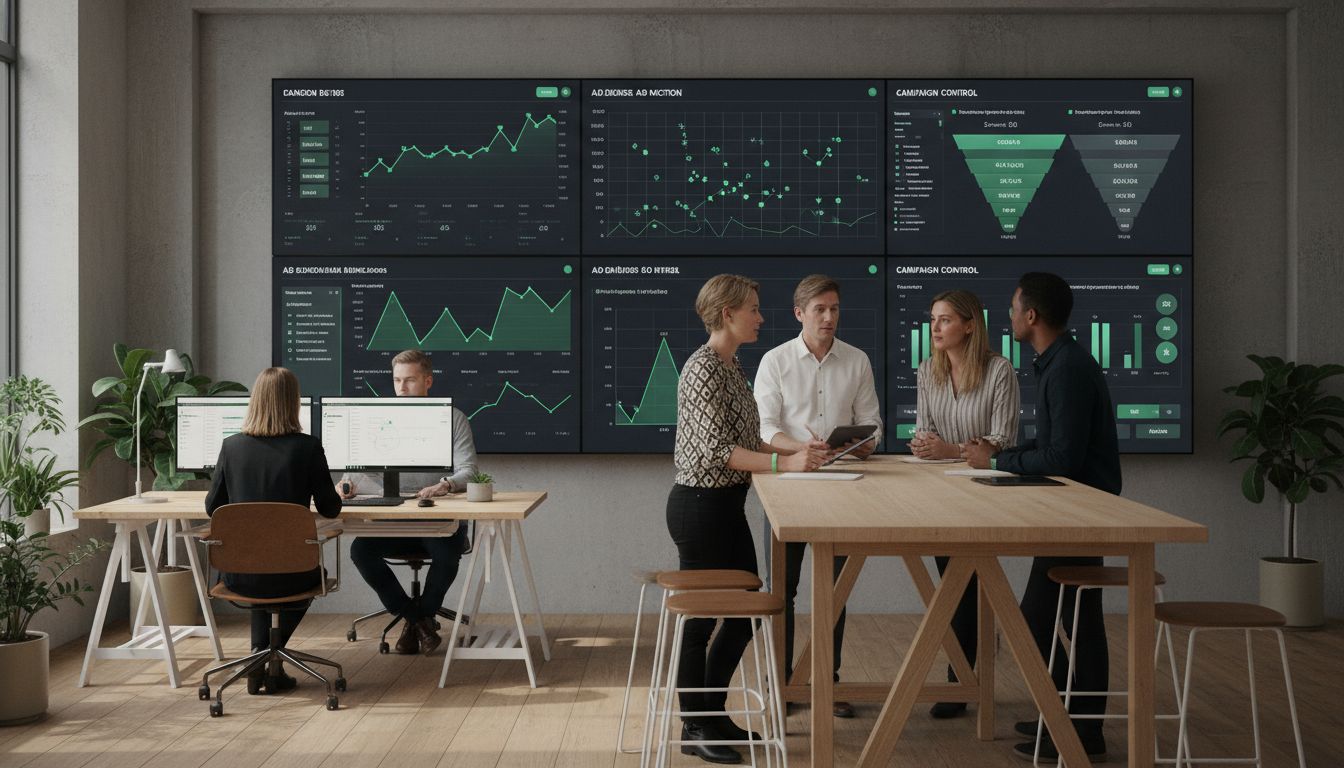Over 80 percent of digital ads are now purchased automatically through programmatic advertising. This means that companies have the opportunity to reach exactly the right people, at exactly the right time and at a smarter price than before. The rapid development has made the market more complex and the competition for users' attention is getting tougher. Here you will get an overview of how programmatic processes work, what options are available and what is required to succeed.
Table of contents
- What is programmatic advertising and how does it work?
- The most common types of programmatic buying
- Step-by-step: How programmatic processes work
- Benefits and challenges of programmatic advertising
- Costs, risks and common pitfalls to avoid
Key Points
| Point | Details |
|---|---|
| Programmatic advertising | An automated ad buying method that uses AI and real-time bidding to optimize digital ads with high precision. |
| Types of programmatic buying | Includes Real-Time Bidding, Private Marketplace, Programmatic Direct, and Guaranteed Programmatic, each with its own unique benefits. |
| Benefits and challenges | Offers accurate target audience analysis and cost-effectiveness but also requires technical expertise and handling of privacy issues. |
| Cost and risks | Businesses must focus on data-driven analytics and budget control to avoid ineffective campaigns and hidden fees. |
What is programmatic advertising and how does it work?
Programmatic advertising is an automation-driven ad buying method that uses artificial intelligence and real-time bidding to place digital ads in the most effective ways. Instead of traditional manual ad placement, an intelligent, data-driven process takes place where ad slots are automatically purchased and optimized in milliseconds.
The process itself works by allowing advertisers to specify specific parameters such as target audience, demographic characteristics, interest targeting, and budget. Google Ads plays a central role here, with algorithms quickly analyzing millions of data points to match the right ad to the right recipient at the right time. This is done through the following main steps:
- Advertiser defines target audience and budget
- Real-time auction begins when a website visitor matches the criteria
- Bidding algorithms choose the winning ad in milliseconds
- Ad is shown to the specific user
The advantage of programmatic advertising is its extreme precision and cost-effectiveness. Traditional advertising had limited accuracy, while programmatic advertising can target very specific segments with minimal resource consumption. By using advanced machine learning techniques, advertisers can reach potential customers with unprecedented accuracy and relevance.
The most common types of programmatic buying
Programmatic buying encompasses several different methods of automated advertising that give businesses flexibility and precision in their digital marketing efforts. These buying methods differ in terms of approach, scope, and specific uses.
The main types of programmatic buying include:
- Real-Time Bidding (RTB): The most well-known method where ad slots are auctioned off in real time. Advertisers can bid for specific ad impressions based on user data, allowing for extremely precise targeting.
- Private Marketplace (PMP): An exclusive digital advertising space where selected advertisers can pre-purchase ad space from specific websites. This provides greater control and quality assurance compared to open marketplaces.
- Programmatic Direct: A method in which advertisers directly negotiate fixed prices and volumes with specific publications or websites, guaranteeing premium ad placements.
- Guaranteed Programmatic: Combines benefits from direct sales and programmatic technology by securing specific display volumes at predetermined prices.
Digital Advertising: Everything You Need to Know shows that each purchasing method has its unique advantages. The choice depends on the company's specific marketing strategy, budget and desired reach.
 By understanding these different buying methods, marketers can optimize their digital advertising efforts and reach the right audience more effectively than ever before.
By understanding these different buying methods, marketers can optimize their digital advertising efforts and reach the right audience more effectively than ever before.
Step-by-step: How programmatic processes work
Programmatic advertising processes is a complex but sophisticated method of automated ad placement that requires several interconnected technical steps. The process begins with data collection and ends with the optimal ad display for each individual user.
Here are the critical steps in a programmatic advertising process:
- Data acquisition and analysis
- Collection of user data from websites, cookies and behavioral patterns
- Categorization of user profiles based on demographic and behavioral characteristics
- Ad space availability
- Websites and apps signal available ad spaces to auction platforms
- Real-time assessment of each potential ad impression
- Bidding process
- Automatic algorithms evaluate ad placement opportunities
- Fast, real-time bidding where the best advertiser is chosen in milliseconds
- Ad rendering
- Winning ad delivered directly to the user's device
- Personalized and contextual ad display
Best Email Marketing Services 2025 underscores the importance of data-driven precision in modern marketing processes. Through these automated steps, companies can achieve an unprecedented level of targeted communication, where each ad impression is tailored for maximum relevance and impact.
Benefits and challenges of programmatic advertising
Programmatic advertising represents a dynamic marketing approach with both significant benefits and potential challenges for modern businesses. The technology offers unparalleled precision and efficiency, but also requires strategic understanding and continuous optimization.
Benefits
- Extremely precise targeting: Ability to reach specific target groups based on detailed behavioral analyses
- Cost-effectiveness: Automated processes reduce manual work and optimize advertising budgets
- Real-time optimization: Rapidly adapt ads based on immediate performance data
- Wide range: Access to millions of ad spaces across various digital platforms
Challenges
- Privacy issues: Increasing restrictions on data use and personal information
- Complexity: Requires advanced technical expertise for effective implementation
- Ad quality risk: Automated systems can sometimes place ads in inappropriate contexts
- Transparency issues: Difficulties in fully understanding the decision-making processes of algorithms
The role of digital advertising highlights how programmatic advertising is continually evolving. Success requires a balanced strategy that maximizes the technology's potential while managing its inherent complexity and challenges.
Costs, risks and common pitfalls to avoid
Programmatic advertising is a complex marketing method that requires careful strategy and continuous monitoring. Despite its potential, there are several critical aspects that businesses must understand and manage to maximize returns and minimize unnecessary risks.
According to hkm It is crucial to understand the basics and set clear goals to avoid ineffective campaigns. Some of the most common pitfalls include:
- Insufficient data analysis: Failure to deeply analyze user behavior
- Lack of budget control: Uncontrolled spending through automated systems
- Disintegrated technology stack: Poor interconnection between different marketing tools
- Low ad relevance: Ads that do not match users' interests
Carlsquare highlights that a significant portion of costs in the programmatic advertising ecosystem can be difficult to derive, making transparency and accurate cost tracking critical to avoiding hidden fees.
Successfully navigating these challenges requires a proactive approach: continuous education, regular performance monitoring, precision in data analysis, and flexibility in campaign design. By understanding and preventing these risks, companies can harness the full potential of programmatic advertising.
Maximize your success with programmatic advertising and iMarketing's expertise
Navigating the complex world of programmatic advertising can feel overwhelming. Challenges like data collection, real-time optimization, and budget control require both technical expertise and strategic insight to succeed. The goal is to reach the right audience with precision without wasting resources or falling into common pitfalls.
In iMarketing.se We understand your needs and pain points. We combine advanced digital marketing strategies like Google Ads and data-driven advertising with web development and optimization to ensure your programmatic advertising performs at its best. We help you take control of your campaigns through transparency and continuous optimization that increases your ROI and delivers real results.
Would you like to see concrete examples of how we help companies grow digitally? Take a look at our customer case and discover the possibilities.

Take the step towards smarter and more profitable advertising today. Visit iMarketing.se to book a free consultation and let us show you how you can take full advantage of programmatic advertising without worrying about the common pitfalls.
Frequently Asked Questions
What is programmatic advertising?
Programmatic advertising is an automated method of buying and placing digital ads, where algorithms and real-time bidding are used to optimize advertising effectiveness.
How does programmatic advertising work?
In programmatic advertising, advertisers define their audiences and budgets, followed by a real-time auction that matches ads with website visitors based on specific criteria.
What types of programmatic buying are there?
The most common types of programmatic buying include Real-Time Bidding (RTB), Private Marketplace (PMP), Programmatic Direct, and Guaranteed Programmatic, each with its own unique benefits.
What are the benefits of programmatic advertising?
The benefits of programmatic advertising include extremely precise targeting, cost-effectiveness, real-time optimization, and broad reach across digital platforms.
Recommendation
- The Role of Digital Advertising: Complete Guide – iMarketing
- Digital Advertising: Everything You Need to Know – iMarketing
- What Are Display Ads? Complete Guide For Businesses – iMarketing
- Facebook advertising benefits – iMarketing
- Understanding Programmatic Advertising Explained Simply – playablemaker.com Understanding Programmatic Advertising Explained Simply


